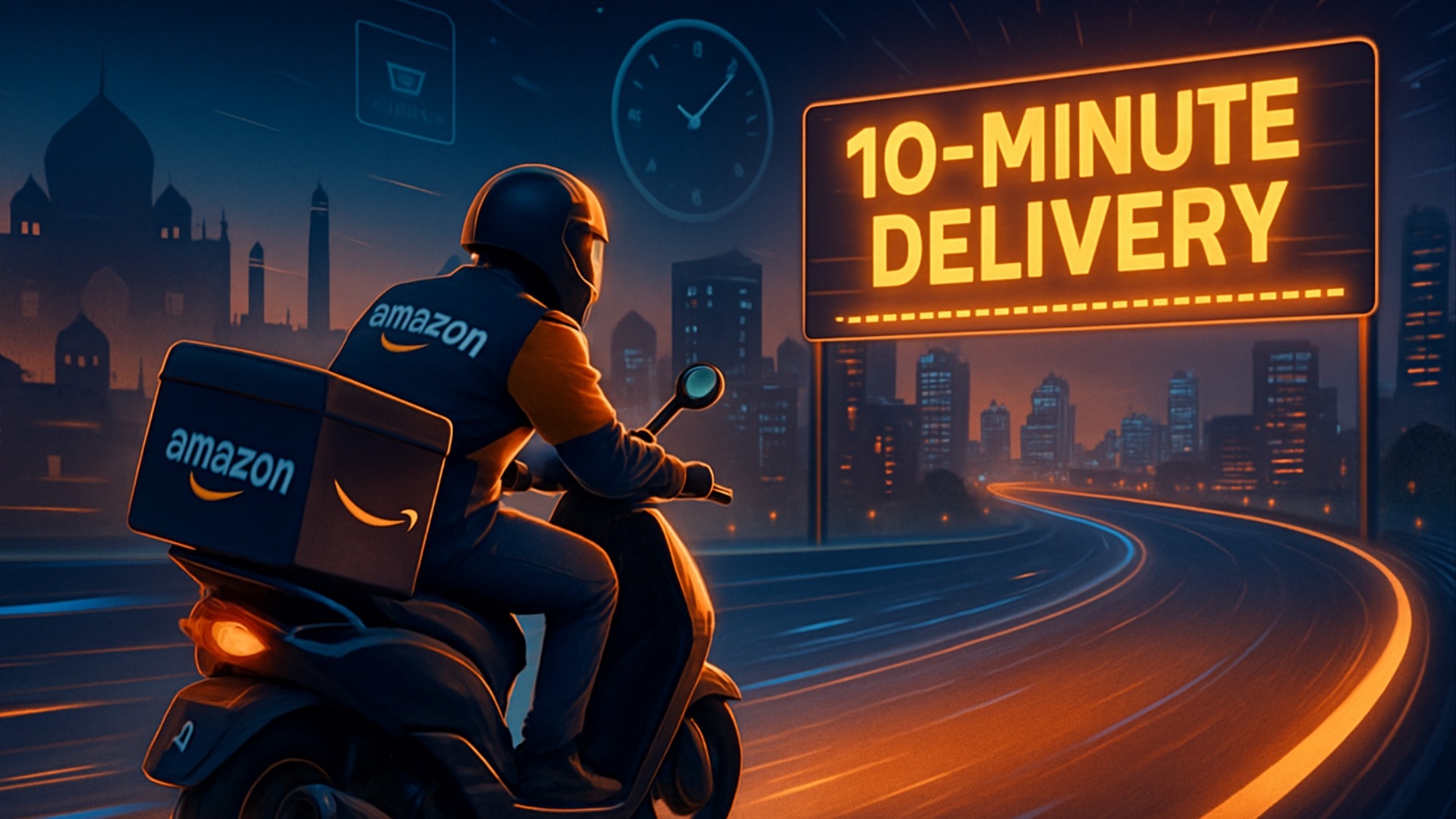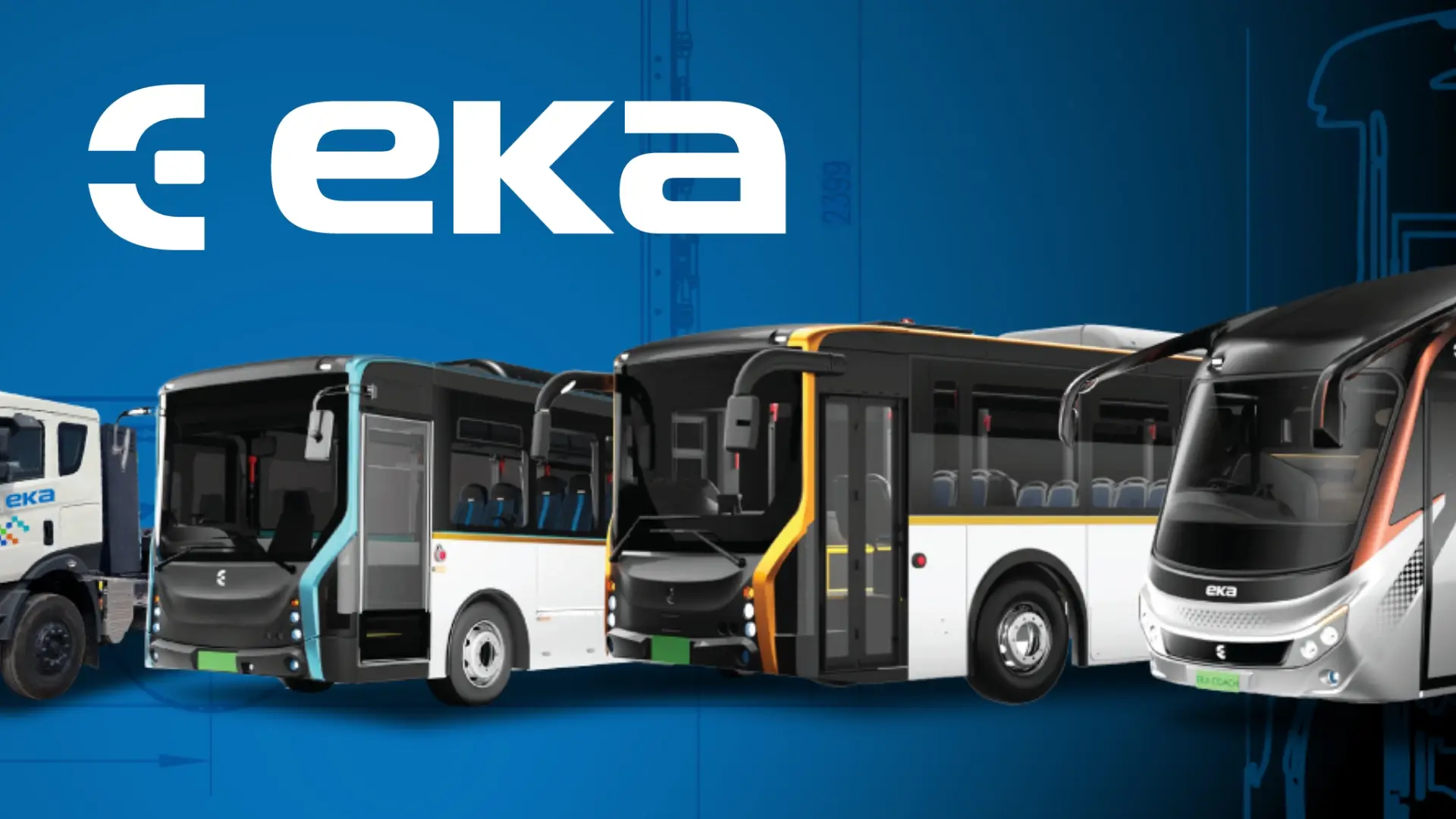After artificial intelligence, if there’s one word dominating headlines in India, it is quick commerce. What started as a convenience has now become a way of life, especially in Tier 1 cities. With the industry making a strong push into Tier 2 and Tier 3 cities, quick commerce is grabbing attention across the country.
According to a recent industry report, quick commerce orders have doubled to ₹64,000 crore in FY25, and the market is projected to touch ₹2 lakh crore by FY28. These numbers aren’t just impressive; they’re a wake-up call for traditional players and a green signal for new entrants.
One of the most significant developments in this space came just yesterday: Amazon has officially entered the 10-minute delivery game, launching its quick commerce service in Delhi. This move is not just about faster delivery but clearly shows that Amazon is all set to compete with existing quick commerce giants like Blinkit, Zepto, Swiggy Instamart, and others. Amazon is known for its robust logistics, warehousing infrastructure, and same-day or next-day delivery models, and now Amazon is now set to invest a massive ₹2,000 crore to expand its quick commerce presence across India.
This rising competition is beneficial for the customers, but for the players like Zepto, Blinkit, Instamart, and Big Basket, it will be negative news. This is not because Amazon will disrupt the market but for the other reasons. One of the major concerns that we witness in the future is the shrinking of the margins for quick commerce players.
Quick commerce already operates on thin or negative margins. Companies such as Zepto and Blinkit have invested hundreds of crores in their pursuit of speed, customer acquisition, and retention. Now, Amazon comes with deep pockets, operational excellence, and ruthless pricing strategies. It has the ability to undercut prices, offer better discounts, absorb higher delivery costs, and also negotiate better rates with suppliers at scale.
This will likely trigger a price war, forcing smaller players or less-efficient platforms to either match prices by burning more cash or risk losing market share. It will create a very competitive nature in the industry as it is getting crowded. The competition is rising, no doubt about that, but this is also because the adoption of quick commerce in India is really high.
Not just quick commerce, but overall e-retail adoption rates are very high. To give you more clarity on this, if you compare the rankings, India ranks second in the E-retail shoppers list now, but in 2014 we were at 6th place. This adoption and e-retail shoppers are increasing at a decent CAGR of 20%.
More interesting insight is that over 60% of new e-retail shoppers are from Tier 3 cities, and 45% of new orders come from the same Tier 3 cities. Not just in a particular city or town, irrespective of the place, the adoption rates are too high. India’s shopping habits have undergone a silent revolution; for instance: Over two-thirds of all e-grocery orders are now fulfilled through quick commerce platforms, and 1 out of every 10 rupees spent on e-retail in the country is routed through Q-commerce.
What makes quick commerce even more remarkable is the speed at which it’s scaling. Industry forecasts now predict a compound annual growth rate of 40%+ all the way to 2030. So, there are various reasons that are contributing to the growth. One of the major reasons is category expansion; from just groceries to now personal care, electronics, fashion accessories, and even ready-to-eat snacks, platforms are broadening their products.
So, the major question from this rising competition is affecting the overall economy. First, the rise in competition leads to the discounts and offers, but the unfair pricing will also follow the trend. We now witness how the quick commerce companies are levying the extra fees even though they offer free cash. The discounts that they are offering are not actually the offers. At some given point, all these players want to make profits, and then the pricing burden will be pushed on to customers.
While quick commerce platforms continue to surge with dark stores, tech-driven logistics, and data-backed decision-making, India’s traditional Kirana stores are feeling the heat. Once the unquestioned pillars of local retail, kiranas are now facing a gradual erosion in market share, dropping from 95% in 2018 to 92.6% in 2023, with projections falling to 88.9% by 2028, as per a 2024 report by Datum.
The same report reveals that 46% of quick commerce users have reduced purchases from Kirana stores, and over 82% have shifted at least a quarter of their shopping online. Yet, instead of resisting change, some kiranas are choosing to evolve.
As the quick commerce landscape continues to heat up, it’s clear that the sector is far from reaching its peak. What we’re witnessing today is just the first phase of transformation. The next few years will be defined by consolidation, innovation, and intelligent scalability.
With over 60% of new e-retail shoppers now emerging from Tier 3 cities, the real battlefield will shift beyond metros. Players will focus on local languages, regional assortments, and ultra-affordable pricing to win the next 500 million users. With big players like Amazon entering the game and more people choosing speed and convenience, this space is only going to get more competitive. While customers enjoy the benefits, businesses will need to adapt quickly. The future of quick commerce will be shaped by better technology, smarter delivery, and partnerships that make everyday shopping easier for everyone.








